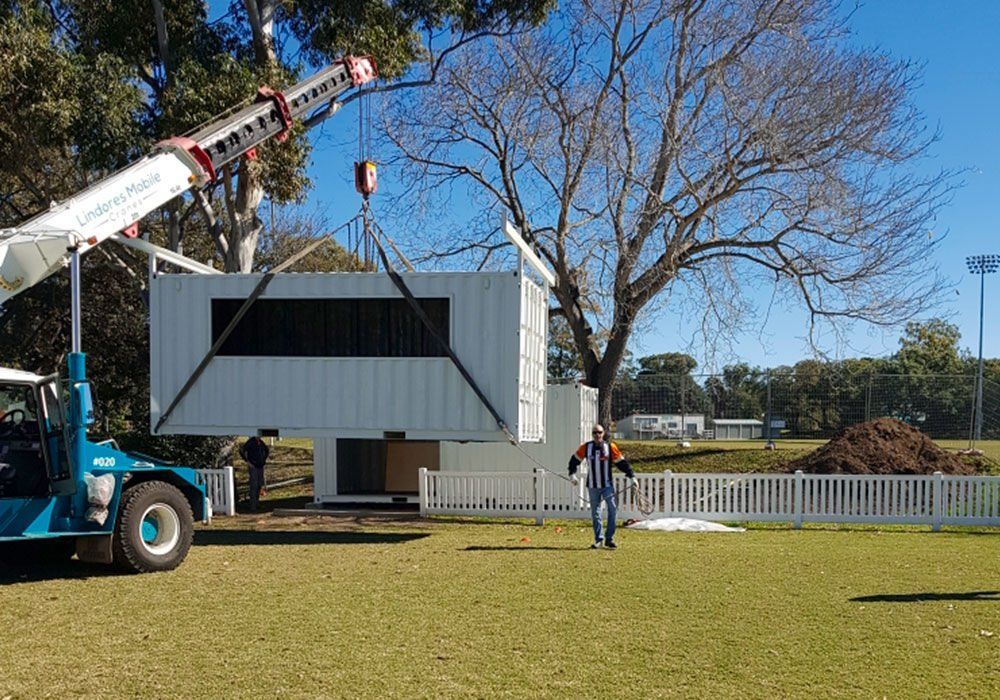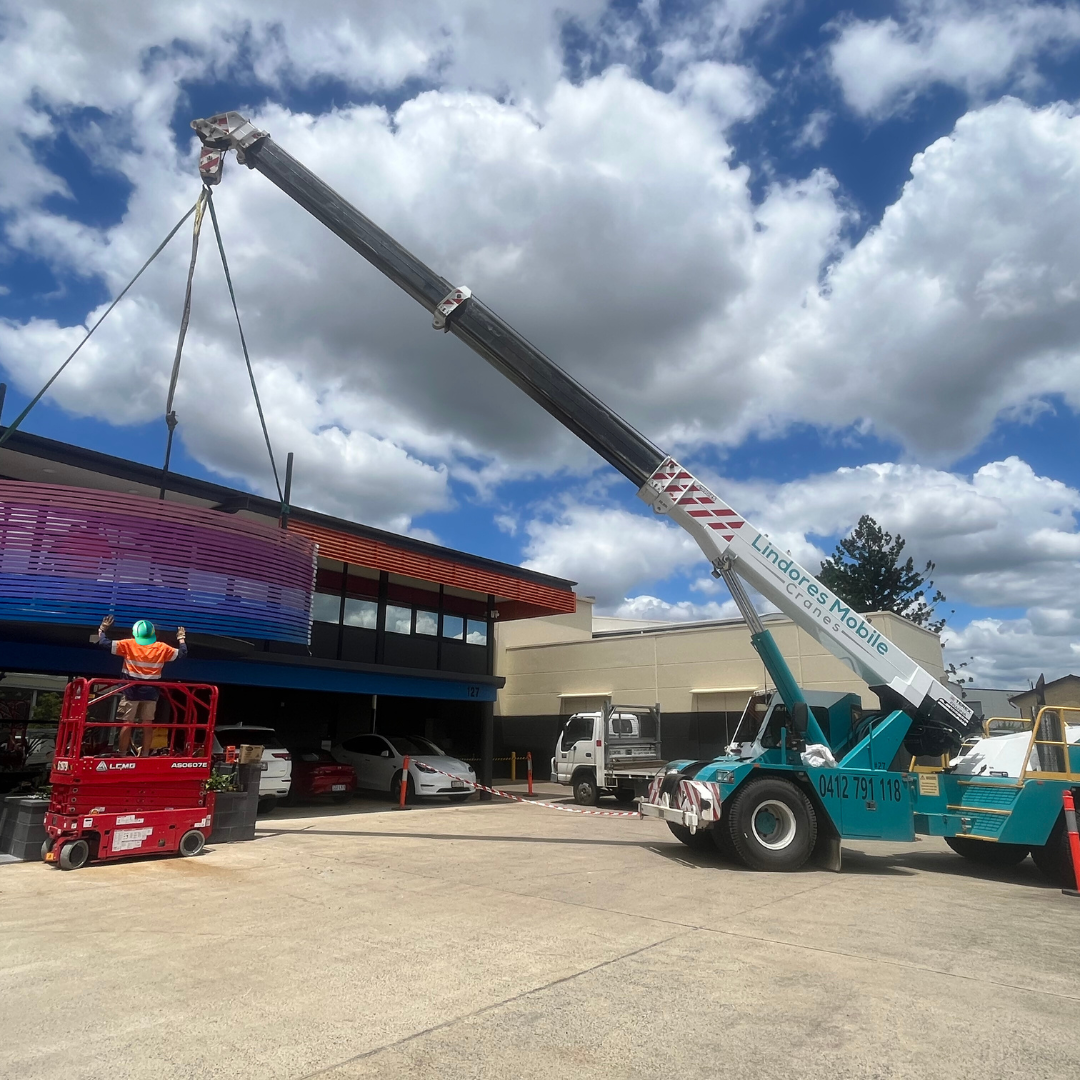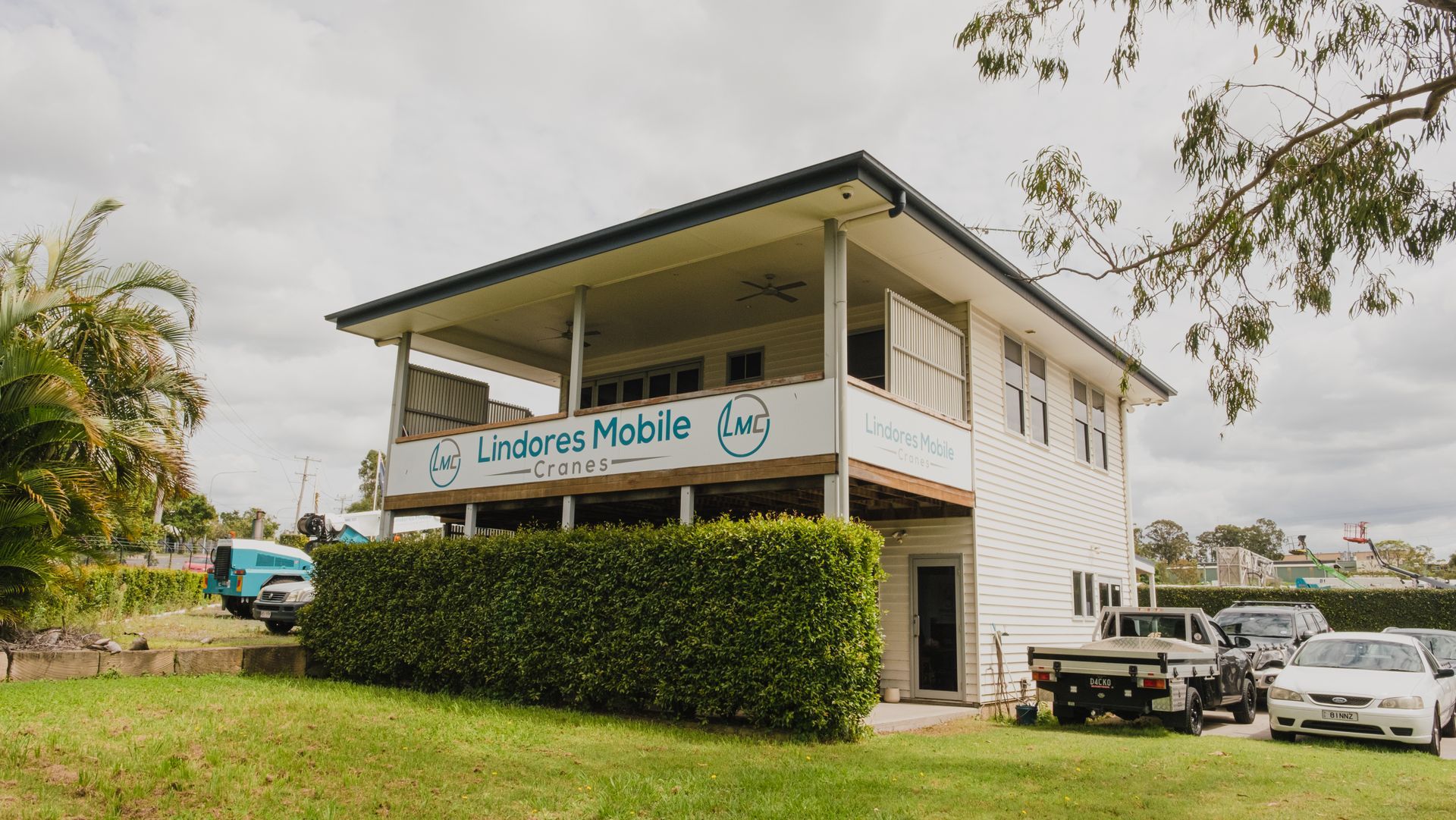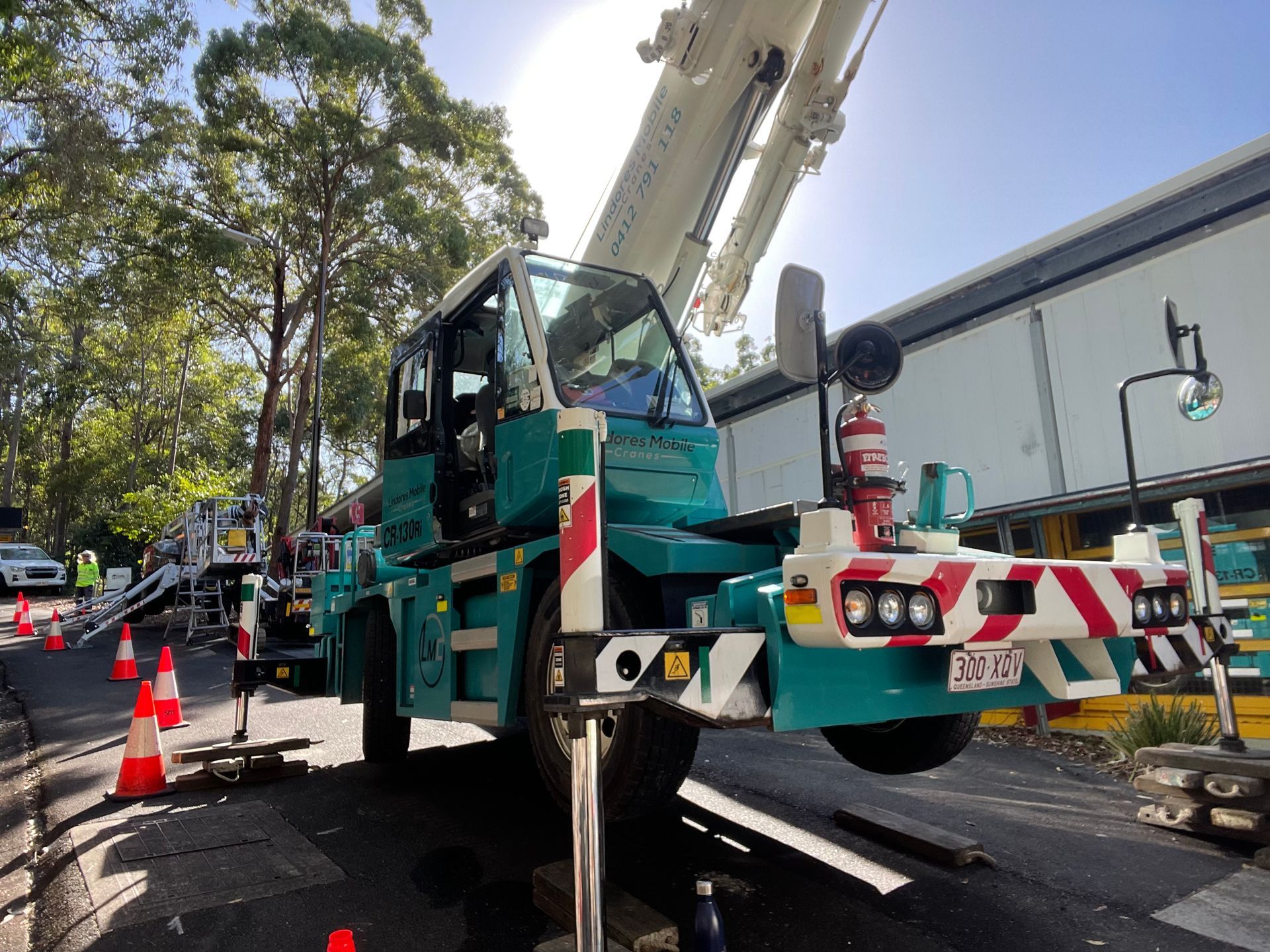Should I hire a mobile or fixed crane?
What is the difference?

Cranes are essential to the efficient functioning of many worksites, warehouses and shipyards, with the perfect crane for every application being available for hire. Let’s take a closer look at cranes, what they do, and their background to help you choose what will work best for your situation.
The history of cranes
A crane has a sole purpose, to lift something too heavy to be otherwise manoeuvred and to safely move it to another location or place it back when safe to do so. Whilst we tend to think of cranes as modern utilitarian equipment, such as our mobile hire fleet, cranes have been used throughout history for the same purpose that they are used for today. In ancient Greece, cranes were used to assist with the lifting of marble pillars for buildings. Shipyards have used cranes since the middle ages to safely manoeuvre cargo onto the decks of ships, a practice that is still very much in place in 2020.
In ancient times, Greek cranes were powered by simple winding ropes around winches that were pulled by either men or donkeys, however, the rise of the Roman Empire saw the more mechanised compound pulley systems come into use. In the middle ages pulleys combined with large wheels, spun by men walking inside, or animals turning a large winch by walking in circles. Although rudimentary in design, the lifting capacity of these early cranes was 1 – 5 metric tonnes.
Industrial Revolution and Crane Design
In ancient times, Greek cranes were powered by simple winding ropes around winches that were pulled by either men or donkeys, however, the rise of the Roman Empire saw the more mechanised compound pulley systems come into use. In the middle ages pulleys combined with large wheels, spun by men walking inside, or animals turning a large winch by walking in circles. Although rudimentary in design, the lifting capacity of these early cranes was 1 – 5 metric tonnes.
Industrial Revolution and Crane Design
The Industrial Revolution saw the next evolution in crane design, both in power sources and in technology. In 1850 the Fairbairn crane was patented, with its innovative design the first to utilise a curved jib (or arm). The use of pulleys, both fixed and moveable, enabled the crane to lift weights more than 10x that of its predecessors. A working example of the Fairbairn crane is still used in the Bristol Harbour in the UK.
The next evolution of the crane was the powering of the mechanism via steam in the late 1800s, with electric-powered cranes being the most common form of crane power by the end of the 19th century.
Cranes in the World Wars
World War One saw the next development in crane design and application with Hans Liebherr’s tower crane used for the rapid reconstruction of bombed cities during the war. The key difference with this crane was the levering action, with the tower top acting as the fulcrum and the jib counterbalanced by a weight. The basics of this design is still seen on most building sites throughout the world. The average lifting capacity of this style of crane is 40 tonnes with the Liebherr Group, Liebherr LTM 11200-9.1 garnering the title of the most powerful mobile crane ever built with a lift capacity of 1200 tonnes.
Cranes are now used in many different applications throughout the world, and even beyond to the International Space Station, making cranes truly a universal piece of machinery.
Cranes in Shipping
Cranes are commonly used for shipping to remove and replace containers and other cargo onto ships. Whilst great strength is needed for this momentous task, incredible precision from the machinery and the operator is required to ensure that the container ships are loaded with accuracy and efficiency. With up to 24000 containers on vessels that are often unloaded and reloaded by cranes within 72 hours, this is a significant contribution to global commerce.
Cranes in Construction
Cranes are used for all manner of reasons on the construction site; from domestic residential homesite to large scale infrastructure building projects. It is often said that a city that has multiple cranes on the horizon has a healthy, growing economy. Even the precision uses of cranes such as tree removal or glass placement, makes construction more manageable, more time-efficient, and cost-effective.
For more information about cranes, crane hire and the type of crane needed for your job, contact the team at Lindores Mobile Cranes for expert advice and a passion for all things crane related.
The next evolution of the crane was the powering of the mechanism via steam in the late 1800s, with electric-powered cranes being the most common form of crane power by the end of the 19th century.
Cranes in the World Wars
World War One saw the next development in crane design and application with Hans Liebherr’s tower crane used for the rapid reconstruction of bombed cities during the war. The key difference with this crane was the levering action, with the tower top acting as the fulcrum and the jib counterbalanced by a weight. The basics of this design is still seen on most building sites throughout the world. The average lifting capacity of this style of crane is 40 tonnes with the Liebherr Group, Liebherr LTM 11200-9.1 garnering the title of the most powerful mobile crane ever built with a lift capacity of 1200 tonnes.
Current Uses of Cranes
Cranes in Shipping
Cranes are commonly used for shipping to remove and replace containers and other cargo onto ships. Whilst great strength is needed for this momentous task, incredible precision from the machinery and the operator is required to ensure that the container ships are loaded with accuracy and efficiency. With up to 24000 containers on vessels that are often unloaded and reloaded by cranes within 72 hours, this is a significant contribution to global commerce.
Cranes in Construction
Cranes are used for all manner of reasons on the construction site; from domestic residential homesite to large scale infrastructure building projects. It is often said that a city that has multiple cranes on the horizon has a healthy, growing economy. Even the precision uses of cranes such as tree removal or glass placement, makes construction more manageable, more time-efficient, and cost-effective.
For more information about cranes, crane hire and the type of crane needed for your job, contact the team at Lindores Mobile Cranes for expert advice and a passion for all things crane related.
The Liftout

At Lindores Mobile Cranes , we understand that the key to safe and efficient crane operations is regular preventive maintenance. By staying proactive, we minimise downtime, prevent costly repairs, and ensure our fleet remains in peak condition. Keeping our equipment in top-notch shape allows us to deliver the best possible service to you! Why is Preventive Maintenance Essential? Our cranes handle heavy loads daily and operate in demanding environments, which makes regular maintenance a top priority. Through routine inspections and servicing, we identify potential issues before they escalate, ensuring compliance with industry safety standards and extending the lifespan of our equipment. How Do We Maintain Our Cranes? Thorough Inspections We conduct daily and weekly checks on hydraulic systems, cables, brakes, and structural components to catch early signs of wear and tear. Lubrication and Fluid Monitoring Keeping our cranes properly lubricated and maintaining hydraulic and engine fluid levels helps us prevent mechanical failures. Routine Load Testing We regularly test our cranes to ensure they can safely handle the specified loads without risk of malfunction. Ongoing Operator Training Our experienced operators are trained to spot potential mechanical issues early, allowing us to address them before they cause disruptions. What are the Long-Term Benefits for Our Clients? ● Enhanced Safety – Our commitment to maintenance reduces the risk of accidents, protecting both our team and our clients. ● Operational Reliability – Well-maintained cranes mean fewer delays and smoother project execution. ● Cost-Effectivenes s – By preventing major breakdowns, we save on expensive emergency repairs and ensure competitive pricing for our services. Our Promise to You.. At Lindores Mobile Crane s, we take pride in maintaining a fleet that meets the highest standards of safety and efficiency. Our preventive maintenance program is more than just routine checks—it’s a commitment to delivering reliable, high-quality service every time you work with us. Why Choose Lindores Mobile Cranes ? When you partner with us, you’re choosing a team that values personalised service, unwavering dedication to safety, and a strong connection to the local community. As a family-owned business, we bring a level of care and expertise that sets us apart. Experience the difference our commitment makes— contact us today at lmcops@lmcranes.com.a u to learn more about our crane services.

At Lindores Mobile Cranes , cranes are in our DNA. We are a family-owned and operated company, dedicated to bringing you the best service. Our tight-knit team of skilled crane drivers, riggers and operations crew are passionate about delivering a personable experience that’s a cut above the rest. When selecting a crane service provider, opting for a family-owned and operated business like Lindores Mobile Cranes offers distinct advantages that can significantly enhance your project's success. In this blog, we outline some of the key benefits of working with a family-run company. Personalised Service Family-owned businesses often provide a level of personalised attention that larger corporations may lack. At Lindores Mobile Cranes , we take the time to understand each client's unique needs, ensuring tailored solutions that align with specific project requirements. Commitment to Quality and Safety With a family name associated with the business, there's an inherent commitment to maintaining high standards. We prioritise safety and quality in all operations, adhering to strict industry protocols to protect both our clients and team. Flexibility and Responsiveness Family-run operations can adapt quickly to changing project dynamics. Our team at Lindores Mobile Cranes is empowered to make swift decisions, allowing us to respond effectively to unforeseen challenges and keep your project on track. Deep Community Roots Being a family business, we have deep ties to the South East Queensland community. This local presence fosters trust and reliability, as we are invested in the success and development of our area. Long-Term Relationships We value building lasting relationships with our clients. Our family-oriented approach means we strive for repeat business and referrals, motivating us to exceed expectations consistently. Choosing Lindores Mobile Cranes means partnering with a team that offers personalised service, unwavering commitment to quality and safety, and a deep understanding of the local community. Experience the difference that a dedicated family-owned business can bring to your project. Enquire about our cranes today by contacting lmcops@lmcranes.com.au.

Operating mobile cranes is a critical part of many construction and industrial projects, but it comes with significant risks. Mistakes in crane operation can lead to project delays, equipment damage, or even serious injuries. At Lindores Mobile Cranes , safety and efficiency are at the core of what we do. Below, we’ll explore some of the most common mistakes in mobile crane operation and share how our team actively mitigates risks and prioritises safety on every lift. 1. Improper Site Inspection The Risk: Failure to assess the job site properly can result in uneven ground, insufficient clearance, or interference with nearby structures or power lines, all of which increase the risk of accidents. Our Solution: Lindores Mobile Cranes conducts thorough site inspections before every project. Our experienced team assesses the terrain, identifies potential hazards, and ensures the site meets all safety requirements. This proactive approach minimizes risks and ensures smooth operations from the outset. 2. Exceeding Load Capacities The Risk: Overloading a crane beyond its capacity can compromise stability, leading to equipment failure or tipping accidents. Our Solution: Our team rigorously calculates load weights and matches them with the crane’s capacity. We use advanced load-monitoring systems to double-check weight distributions in real-time. Additionally, our operators are fully trained to understand and adhere to each crane’s load chart. If necessary, we use multiple cranes to lift objects, ensuring sufficient lifting capacity and safe weight distribution. 3. Neglecting Proper Equipment Maintenance The Risk: Poorly maintained cranes are more prone to mechanical failures, which can cause downtime or dangerous malfunctions during operation. Our Solution: At Lindores Mobile Cranes , regular maintenance is non-negotiable. Our cranes undergo routine inspections and servicing by qualified technicians. We maintain detailed maintenance records and replace any worn parts before they become a problem, ensuring our equipment is always in peak condition. 4. Inadequate Operator Training The Risk: Untrained or under-qualified operators may misinterpret signals, improperly maneuver loads, or fail to respond correctly in high-pressure situations. Our Solution: We only employ certified and highly experienced operators. New employees receive consistent and thorough training and mentorship from senior members of our team, to ensure they uphold our high standard of service and operation. Additionally, our team is continuously trained and updated on the latest industry standards and safety protocols. 5. Ignoring Weather Conditions The Risk: Operating a crane in high winds, heavy rain, extreme temperatures or low-visibility heightens the risk of accidents, equipment damage and load instability. Our Solution: Weather conditions are always factored into our planning process. If conditions are deemed unsafe, we communicate transparently with our clients to reschedule operations. Our priority is always safety. 6. Failure to Use Proper Rigging The Risk: Improper rigging or using damaged lifting equipment can result in dropped loads, endangering workers and equipment. Our Solution: Our team is trained to select and inspect the right slings, shackles, and hardware for each lift. We follow strict rigging protocols to ensure every load is secure and balanced before lifting begins. 7. Poor Communication on Site The Risk: Miscommunication among team members can lead to errors in load handling, positioning, or crane operation, increasing the likelihood of accidents. Our Solution: We prioritise clear and consistent communication on all our job sites. Our operators, riggers, and ground crews use standardized hand signals and two-way radios to stay in constant contact, ensuring everyone is on the same page. Why Choose Lindores Mobile Cranes? At Lindores Mobile Cranes , we don’t just operate cranes – we deliver peace of mind. By prioritizing safety, meticulous planning, and industry-leading expertise, we ensure every lift is executed flawlessly. When you partner with us, you’re choosing a team committed to excellence, precision, and the highest safety standards. Ready to make your next project safer and more efficient? Contact Lindores Mobile Cranes today and experience the difference. For all enquiries, please contact lmcops@lmcranes.com.au.
